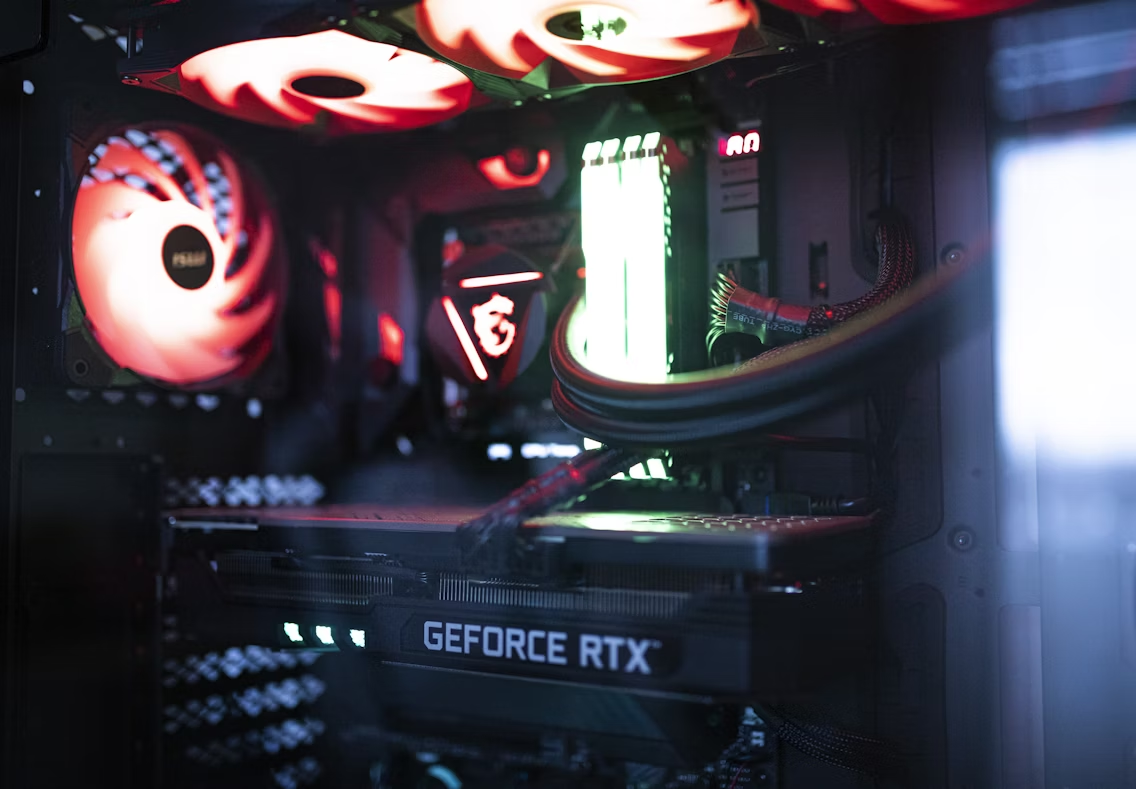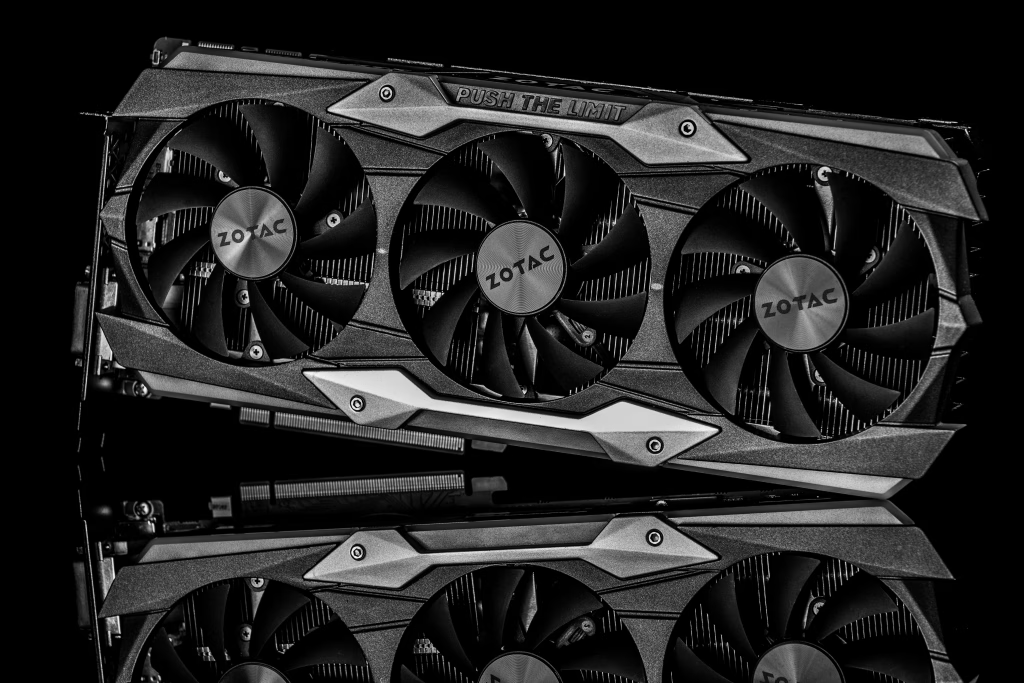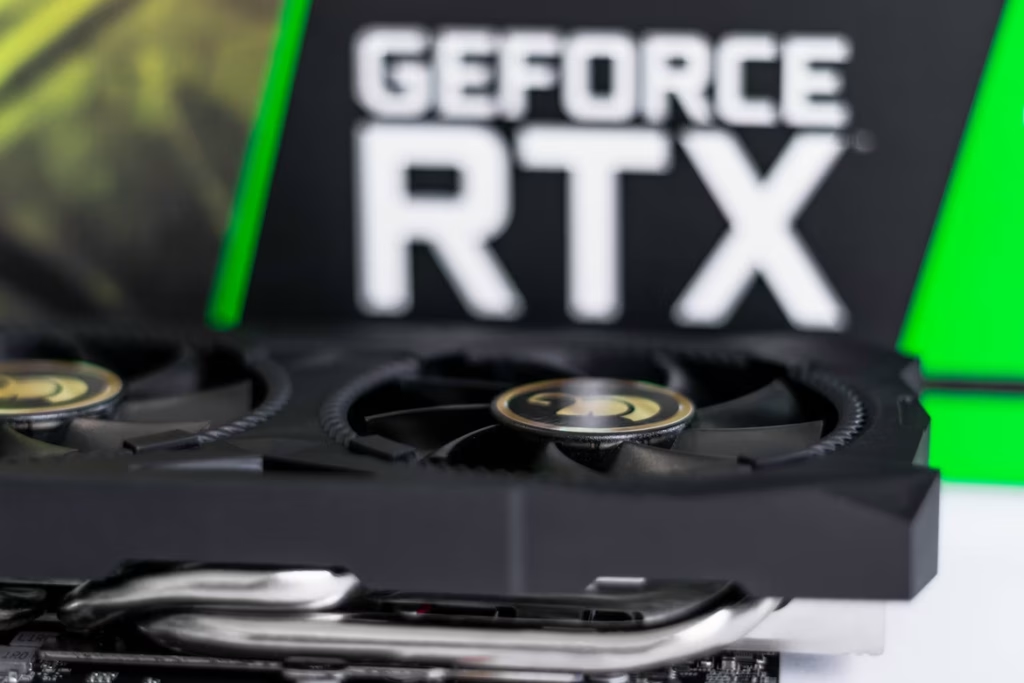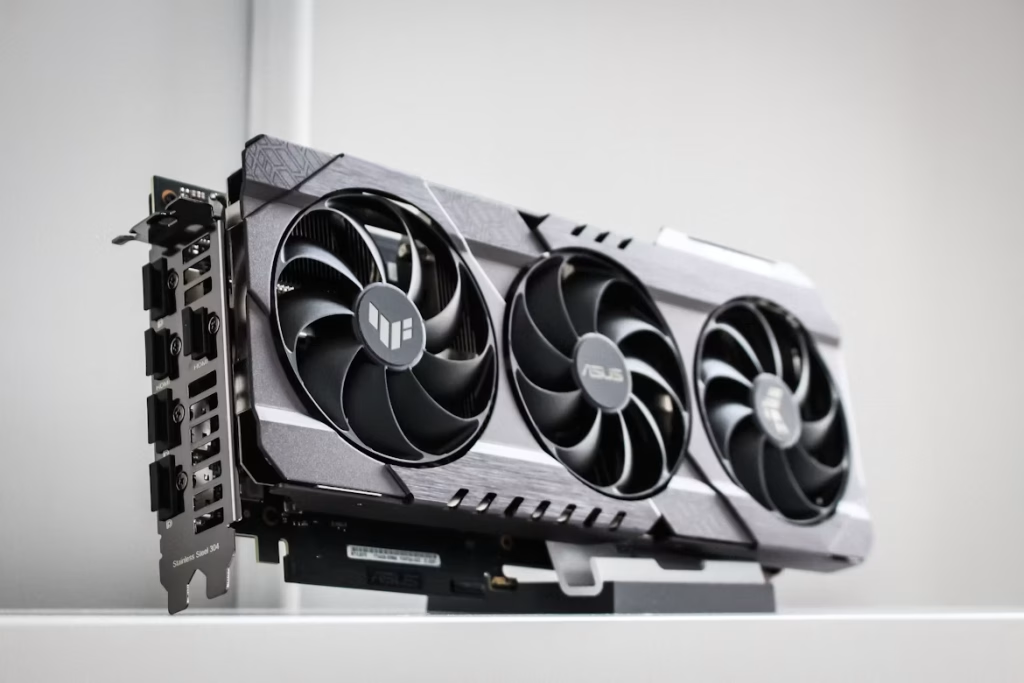From overheating graphics cards to driver crashes and dreaded black screens, let’s traverse the mysterious landscape of the most common graphics card problems that plague gamers and find out how to fix them.
Is your graphics card overheating? Or is there simply no signal? Anyone who has been using a desktop or a laptop for gaming or some heavy-duty work is bound to face some GPU issues at some point in time. I’ve faced it, and I know you have too. It’s inevitable. But that is not what we should be focusing on. The real question here is how to fix it and get your computer up and running.
Graphics card malfunctions can be really annoying and can seriously affect your workflow, leaving you feeling frustrated. But your life doesn’t need to go pitch black like your screen. Whether your graphics card crashes after installing drivers, freezes after overclocking, or your system completely crashes, there is always a solution if you know where to look.
So if you are looking for simple fixes for the most common graphics card, then join me as we explore the underbelly of the most common GPU problems to find out the simplest solutions that will help you sleep peacefully at night again. Let’s hit it.
Your Graphics Card Turns Your PC Into a Heater
Is your graphics card overheating during gaming or editing videos? This can be a headache and can result in random crashes exactly when you’re about to hit a headshot. The problem is, when a graphics card becomes heated excessively, it simply can’t perform the way it should. And if this continues in the long run, it can seriously affect the lifespan of the card and even affect your system. So what should you do?
First, let’s focus on how you can identify graphics card overheating issues:
- Your GPU temperatures are hitting 85°C or higher during gaming
- Your fans start sounding like a jet engine taking off
- Your frame rate drops suddenly during intense scenes
- Your system crashes or freezes unexpectedly
Before we get into my DIY solutions, let me remind you that seeking professional help is always the best solution, as unnecessarily tweaking with your system can seriously damage your hardware. But if you still want to try out some quick fixes, here are my go-to fixes to get your graphics card up and running again:
Clean Your PC
Faulty fans are one of the basic reasons why your graphics card is overheating. It is probably starved of fresh, cool air. So all you need to do is turn off your computer, open the protective casing, and clean the fans using a soft brush. Clean the GPU and dust filters, and remove any dust that may have accumulated inside the internal radiators. Put the outer casing back and watch how your overheating issues disappear like magic.
Add More Fans
Another simple way to let your GPU have more cool air is to add more intake or exhaust fans. By installing new and bigger fans, you can let more air flow into your graphics card, which can help to pull in cooler air and remove hot air from the casing.
Check the thermal paste
Is it possible that your thermal paste has dried out? If you have been using your graphics card for over 3 years, this might be the reason for your graphics card overheating. While you may disassemble and apply the thermal paste all by yourself, it is always best to get some professional help, as you don’t want to damage your system.
Improve your cable management
Are the cables and wires in your system laid out in complete chaos? Is everything all over the place with no proper cable management in sight? Then this can also cause your GPU to heat up by blocking smooth airflow. By effectively managing your wires and cables, you can boost airflow in the case and make your system cooler.
Your Graphics Card Crashes After Installing Drivers
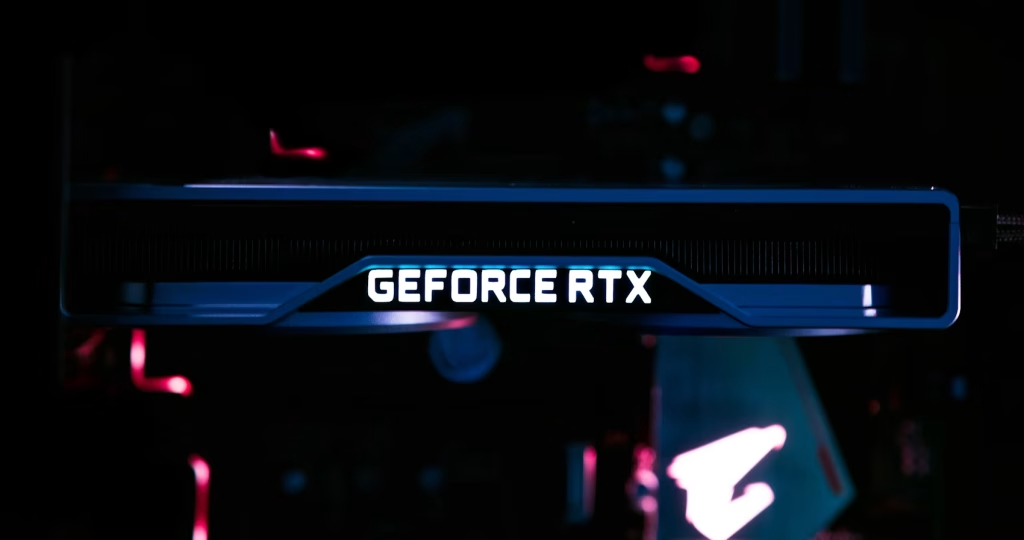
So, you have updated your graphics drivers, but instead of things getting better, it came down crumbling like a delicate house of cards on a stormy night. Your monitor glitches. Your system crashes. And reboots make your screen go black, repeatedly. With new driver releases, graphics card crashes after installing drivers have become extremely common.
If you’re still unsure whether your graphics card has crashed because you installed drivers, here are some signs you need to pay attention to:
- Abnormal glitches and distortions rip through the screen
- System hangs and freezes suddenly, with restart being the only option left
- The dreaded blue screen of death hoists a red flag of a catastrophic system crash
But why does your graphics card crash like this after installing drivers? Here’s why:
- Outdated Drivers: Old or incompatible drivers often lead to instability.
- Hardware Issues: Power supply, faulty parts, or GPU connection issues can cause failures.
- Software Problems: Conflicts between programs can result in crashes and instability.
Okay, so now you know how to spot the signs of graphics card crashes after installing drivers and why it happens. But, now what? Let’s take a look at….
How to Fix It
Well, the first thing you should do is revert to the older version of your driver. Follow these steps:
- Go to Device Manager
- Right-click your graphics card
- Select Properties
- Go to the Driver tab
- Click “Roll Back Driver”
In case the “Roll Back Driver” option appears gray, simply download the previous version from AMD or NVIDIA’s website and manually install it. In some cases, you may be required to completely uninstall the old drivers and then install the new ones. Here’s how to do it:
- Download Display Driver Uninstaller (DDU)
- Boot into safe mode
- Allow it to remove all traces of your graphics drivers
- Restart and install the new drivers fresh
If you ask me, it’s always better to wait for some time, maybe a few weeks, before downloading and updating a new driver release. This becomes even more important when your existing driver is performing perfectly. When you hold back, you let other users test and explore the latest version and find out if it has any bugs. Trust me on this. Thank me later.
Your Graphics Card Freezes After Overclock
So you accidentally overclocked your GPU just a tiny bit. But out of nowhere, your system froze and your screen went blank. You try to fix it and restart your computer, but it’s still frozen. Windows, keyboard, mouse – EVERYTHING – frozen! Alt+Ctrl+Delete doesn’t work. There’s absolutely no response from your PC or laptop. So what’s up?
When you push your GPU beyond its limits, this is often the outcome, and most gamers have faced this at some point in their lives. Trying to overclock your GPU to make it perform better can become a double-edged sword, which can completely ravage your gameplay. But there is a way out of this frozen digital landscape.
Here’s what to do when your graphics card freezes after overclocking:
First of all, reset your GPU clock to the default settings. You can do this by using your overclocking software or simply by rebooting your system. Always remember to raise your clock speed incrementally – one step at a time. Another smart move is to keep stress-testing after each change. Remember to stay away from aggressive overclocks. Increase your core clock by +25MHz increments, test stability with something like Unigine Heaven or 3DMark, then repeat. Whenever your system freezes or crashes, back off by 50MHz from your last stable setting.
Memory overclocking is trickier as it may not necessarily cause immediate crashes. Instead, it can lead to subtle freezes the moment you start gaming. So make sure to start with +100MHz increments and test thoroughly.
And no matter what you do, do not panic when your graphics card freezes after overclocking. Simply restart your system and immediately reset your overclock settings to default in MSI Afterburner or your overclocking tool of choice.
However, if your system remains frozen even at stock settings, then there may be some serious damage, and it’s time to call a professional.
Your Graphics Card is On, But There’s No Signal
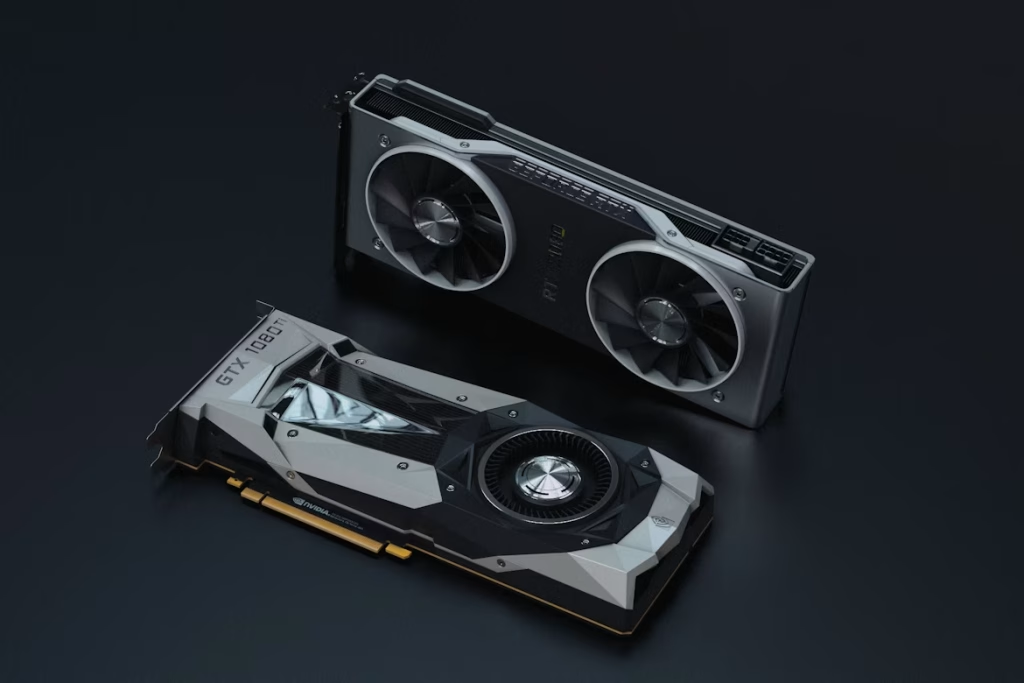
Got the black screen blues? The “graphics card on but no signal” issue is a real heart-stopper. Why? Well, your computer turns on, your keyboard and mouse light up, your graphics card fans start spinning, BUT your monitor seems dead on arrival. It’s just plain flat, black! You wait for it to turn on, but nothing happens! Your heart sinks. You wonder: “WTF?”
So what can you do now? Well, there are a number of things you can do to get back on track. I’ll walk you through my personal approach for fixing them. First off, the obvious:
- Try troubleshooting
- Check with a new monitor
- Check your power cables and replace them if needed
- Try switching around monitor inputs
- Check your GPU, clean it, and install it
You can also check the GPU driver, as certain drivers can cause the screen to turn black or blue due to bugs. A neat trick is to clean your drivers with DDU and install the ones recommended by your GPU manufacturer’s website. Personally, reinserting your graphics card works best for me, almost every time. Simply turn off your computer, unplug everything, remove the GPU, and reinstall it firmly. Make sure to push the power connectors all the way.
Trying out a different monitor can also help you get a clearer idea. If you’re using HDMI, try DisplayPort, or vice versa. Using a different cable and even a different monitor, if possible, can often be more helpful than you think, as most of the time, the problem doesn’t lie with your GPU at all.
If none of these work, try booting with integrated graphics by connecting your monitor to the motherboard’s video outputs. If there is a display, then your graphics card is surely the problem here. Remove your motherboard’s battery for a quick second and clear your CMOS. This resets all BIOS settings and resolves compatibility issues.
While these tactics can help you fix your GPU issues, often the real problem hides somewhere else – the power supply. So make sure there are no issues with your power supply before you start troubleshooting.
Takeaway
All of us face graphics card issues from time to time; it’s part of the experience. But as long as you can identify the warning signs and know what to do, it shouldn’t affect your gaming or workflow. However, it is important that you do not scour the entire internet and try out 10 different fixes, as it can further damage your system.
Most issues are fixable with patience and the right approach. And if all else fails, don’t be afraid to reach out to the online community – we are always here to help, even at 2 am. However, I still believe that if you feel confused and not confident enough to deal with it yourself, consult a professional.


